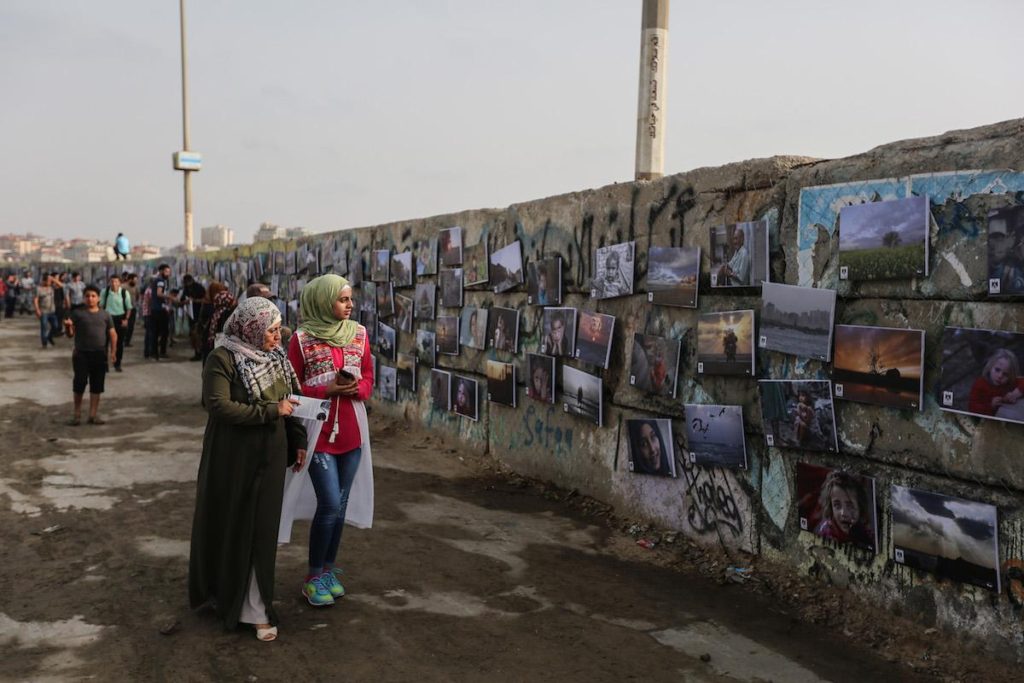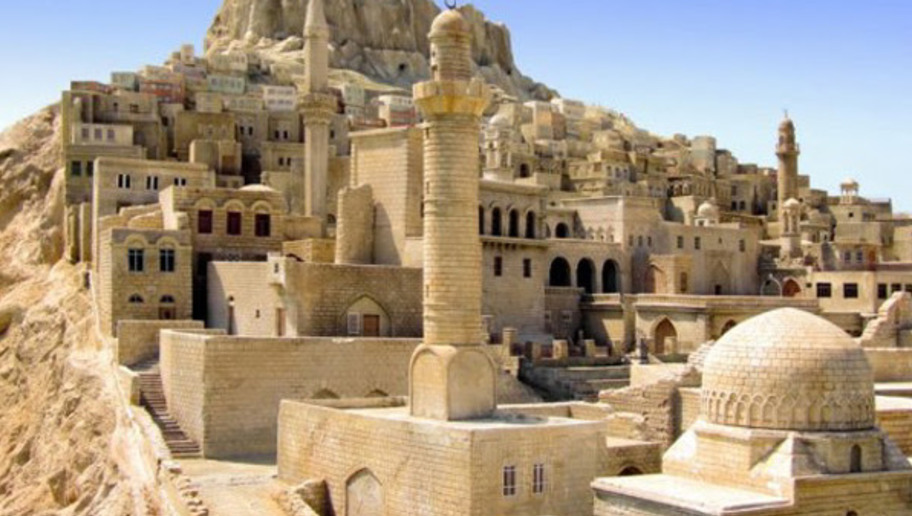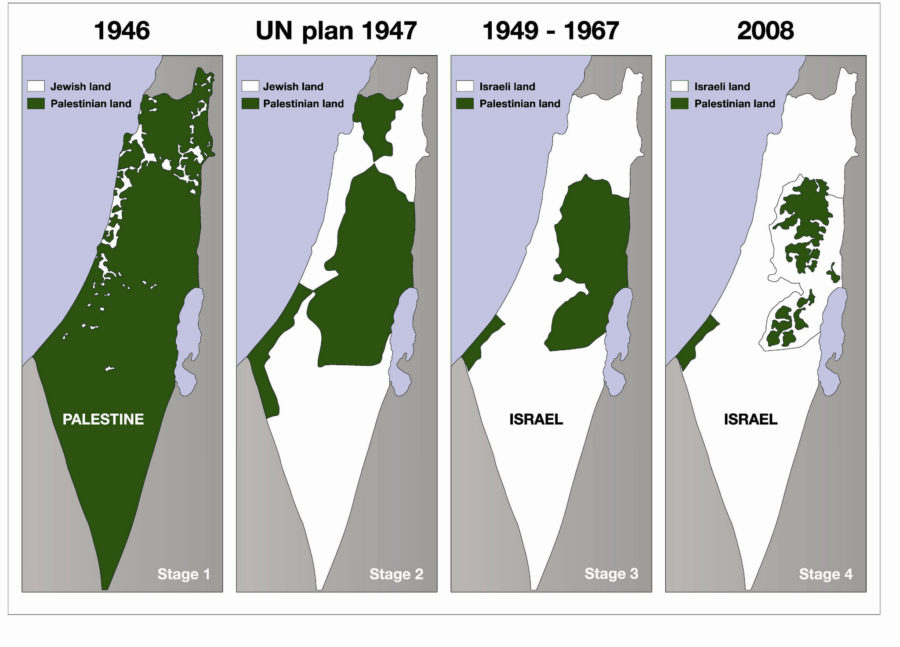Articles
Two Israeli perspectives of Gaza issues
Article theme: Human Rights.
The Palestinian/Arab – Israeli Issue is nearly sixty years old with bloody cycles of devastating wars marking what appears unending hostilities and increasingly remote prospects for a just permanent peace. The recent events of Palestinian internecine showdown in Gaza marks a dramatic change in the Palestinian political landscape of consequence to the Palestinian-Israeli ongoing confrontations and future political settlement in the Middle East. Thus, new fresh pespectives of influential and learned experts and intellectuals on the issues help shed light from various angles on an otherwise most complex situation. Two Israeli intellectuals – Professor Historian Illan Pappe of Haifa University, and columnist journalist Akiva Eldar – who are intimately knowledgeable of the Palistinian-israeli issues, contribute their new fresh perspectives in two seperate articles below.
Towards A Geography Of Peace: Whither Gaza?
By Ilan Pappé
19 June 2007
The Electronic Intifada
The Gaza Strip is a little bit more than two percent of Palestine. This small detail is never mentioned whenever the Strip is in the news nor has it been mentioned in the present Western media coverage of the dramatic events unfolding in Gaza in the last few weeks. Indeed it is such a small part of the country that it never existed as a separate region in the past. Gaza’s history before the Zionization of Palestine was not unique and it was always connected administratively and politically to the rest of Palestine. It was until 1948 for all intents and purposes an integral and natural part of the country. As one of Palestine?s principal land and sea gates to the world, it tended to develop a more flexible and cosmopolitan way of life; not dissimilar to other gateways societies in the Eastern Mediterranean in the modern era. This location near the sea and on the Via Maris to Egypt and Lebanon brought with it prosperity and stability until this life was disrupted and nearly destroyed by the Israeli ethnic cleansing of Palestine in 1948.
In between 1948 and 1967, Gaza became a huge refugee camp restricted severely by the respective Israeli and Egyptian policies: both states disallowed any movement out of the Strip. Living conditions were already harsh then as the victims of the 1948 Israeli politics of dispossession doubled the number of the inhabitants who lived there for centuries. On the eve of the Israeli occupation in 1967, the catastrophic nature of this enforced demographic transformation was evident all over the Strip. This once pastoral coastal part of southern Palesine became within two decades one of the world’s densest areas of habitation; without any adequate economic infrastructure to support it.
The first twenty years of Israeli occupation at least allowed some movement outside an area that was closed off as a war zone in the years 1948 to 1967. Tens of thousand of Palestinians were permitted to join the Israeli labor market as unskilled and underpaid workers. The price Israel demanded for this slavery market was a total surrender of any national struggle or agenda. When this was not complied with — the ‘gift’ of laborers’ movement was denied and abolished. All these years leading to the Oslo accord in 1993 were marked by an Israeli attempt to construct the Strip as an enclave, which the Peace Camp hoped would be either autonomous or part of Egypt and the Nationalist camp wished to include in the Greater Eretz Israel they dreamed of establishing instead of Palestine.
The Oslo agreement enabled the Israelis to reaffirm the Strip’s status as a separate geo-political entity — not just outside of Palestine as a whole, but also cut apart from the West Bank. Ostensibly, both the Gaza Strip and the West Bank were under the Palestinian Authority but any human movement between them depended on Israel’s good will; a rare Israeli trait and which almost disappeared when Benjamin Netanyahu came to power in 1996. Moreover, Israel held, as it still does today, the water and electricity infrastructure. Since 1993 it used, or rather abused, this possession in order to ensure on the one hand the well-being of the Jewish settler community there and on the other in order to blackmail the Palestinian population into submission and surrender. The people of the Gaza Strip thus vacillated in the last sixty years between being internees, hostages or prisoners in an impossible human space.
It is within this historical context that we should view the violence raging today in Gaza and reject the reference to the events there as a campaign in the ‘war against terror,’ an instance of Islamic revivalism, a further proof for al-Qadia?s expansionism, a seditious Iranian penetration into this part of the world or another arena in the dreaded Clash of Civilizations (I picked here only few out of many frequent adjectives used in the Western media for describing the present crisis in Gaza). The origins of the mini civil war in Gaza lie elsewhere. The recent history of the Strip, 60 years of dispossession, occupation and imprisonment produced inevitably internal violence such as we are witnessing today as it produced other unpleasant features of life lived under such impossible conditions. In fact, it would be fair to say that the violence, and in particular the internal violence, is far less than one would have expected given the economic and social conditions created by the genocidal Israeli policies in the last six years.
The Oslo agreement enabled the Israelis to reaffirm the Strip’s status as a separate geo-political entity — not just outside of Palestine as a whole, but also cut apart from the West Bank.
Power struggles among politicians, who enjoy the support of military outfits, is indeed a nasty business that victimizes the society as a whole. Part of what goes on in Gaza is such a struggle between politicians who were democratically elected and those who still find it hard to accept the verdict of the public. But this is hardly the main struggle. What unfolds in Gaza is a battleground between America’s and Israel’s local proxies — most of whom are unintentionally such proxies but none the less they dance to Israel’s tune — and those who oppose it. The opposition that now took over Gaza did it alas in a way that one would find very hard to condone or cheer. It is not the Hamas’ Palestinian vision that is worrying, but rather the means it has chosen to achieve it that we hope would not be rooted or repeated. To its credit one should openly say that the means used by Hamas are part of an arsenal that enabled it in the past to be the only active force that at least tried to stop the total destruction of Palestine; the way it is used now is less credible and hopefully temporary.
But one cannot condemn the means if one does not offer an alternative. Standing idle while the American-Israeli vision of strangling the Strip to death, cleansing half of the West bank from its indigenous population and threatening the rest of the Palestinians — inside Israel and in the other parts of the West Bank — with transfer, is not an option. It is tantamount to “decent” people?s silence during the Holocaust.

We should not tire from mentioning the alternative in the 21st century: BDS — Boycott, Divestment and Sanctions — as an emergency measure — far more effective and far less violent — in opposing the present destruction of Palestine. And at the same time talk openly, convincingly and efficiently, of creating the geography of peace. A geography in which abnormal phenomena such as the imprisonment of small portion of the land would disappear. There will be no more, in the vision we should push forward, a human prison camp called the Gaza strip where some armed inmates are easily pitted against each other by a callous warden. Instead that area would return to be an organic part of an Eastern Mediterranean country that has always offered the best as a meeting point between East and West.
Never before, in the light of the Gaza tragedy, has the twofold strategy of BDS and a one state solution, shined so clearly as the only alternative forward. If any of us are members in Palestine solidarity groups, Arab-Jewish dialogue circles or part of civil society’s effort to bring peace and reconciliation to Palestine — this is a time to put aside all the false strategies of coexistence, road maps and two states solutions. They have been and still are sweet music to the ears of the Israeli demolition team that threatens to destroy what is left of Palestine. Beware especially of Diet Zionists or Cloest Zionists, who recently joined the campaign, in Britain and elsewhere against the BDS effort. Like those enlightened pundits who used liberal organs in the United Kingdom, such as The Guardian, to explain to us at length how dangerous is the proposed academic boycott on Israel. They have never expended so much time, energy or words on the occupation itself as they did in the service of the ethnic cleansing of Palestine. UNISON, Britain?s large public service trade union, must not be deterred by this backlash and it should follow these brave academics who endorsed the debate on the boycott, as should Europe as a whole: not only for the sake of Palestine and Israel, but also if it wishes to bring a closure to the Holocaust chapter in its history.
And a final small portion of food for thought. There are quite a few Jewish mothers and wives in the Gaza Strip — some sources within Gaza say up to 2000 — married to local Palestinians and parents to their children. There are many more Jewish women who married Palestinians in the Palestine countryside. An act of desegregation that both political elites find difficult to admit, digest or acknowledge. If despite the colonization, occupation, genocidal policies and dispossession such harmonies of love and affection were possible, imagine what could happen if these criminal policies and ideologies would disappear. When the Wall of Apartheid is removed and the electric fences of Zionism dismantled — Gaza will become once more a symbol of Fernand Braudel’s coastal society, able to fuse different cultural horizons and offer a space for new life instead of the war zone it has become in the last sixty years.
Ilan Pappe is senior lecturer in the University of Haifa Department of political Science and Chair of the Emil Touma Institute for Palestinian Studies in Haifa. His books include, among others, The Making of the Arab-Israeli Conflict (London and New York 1992), The Israel/Palestine Question (London and New York 1999), A History of Modern Palestine (Cambridge 2003), The Modern Middle East (London and New York 2005) and his latest, Ethnic Cleansing of Palestine (2006).
Sharon ‘s dream
By Akiva Eldar
June 18, 2007
Haaretz
If Ariel Sharon were able to hear the news from the Gaza Strip and West Bank, he would call his loyal aide, Dov Weissglas, and say with a big laugh: “We did it, Dubi.” Sharon is in a coma, but his plan is alive and kicking. Everyone is now talking about the state of Hamastan. In his house, they called it a bantustan, after the South African protectorates designed to perpetuate apartheid.
Just as in the Palestinian territories, blacks and colored people in South Africa were given limited autonomy in the country’s least fertile areas. Those who remained outside these isolated enclaves, which were disconnected from each other, received the status of foreign workers, without civil rights. A few years ago, Italian Foreign Minister Massimo D’Alema told Israeli friends that shortly before he was elected prime minister, Sharon told him that the bantustan plan was the most suitable solution to our conflict.
The right and the settlers feared that the disengagement from the entire Gaza Strip was no more than a down payment on a withdrawal from most of the West Bank. The left and the international community similarly believed that if the evacuation of Israeli soldiers and civilians from Gaza went well, the way would be paved for a two-state solution; but there were also some who feared that Sharon did not intend merely to sever Gaza from Israel, thereby erasing 1.4 million Arabs from the demographic balance, but also to drive a wedge between Gaza and the West Bank.
Exactly two years ago, in June 2005, Egyptian Foreign Minister Ahmed Aboul Gheit warned Shimon Peres during a visit to Israel that if the disengagement were not accompanied by progress toward a solution in the West Bank, the Gaza Strip “would explode,” in his words. The then vice premier told his guest that he agreed with every word, but took care to point out that his statements did not necessarily reflect the views of prime minister Sharon.
Israel’s violation of the Agreement on Movement and Access, which was signed by U.S. Secretary of State Condoleezza Rice, strengthened suspicions that Sharon was plotting to sever Gaza from the West Bank. The order that the dogs could bark, but the caravans would not move between the Palestinian Authority’s two sections had already been quietly issued by the end of 2005. That was a few months before Hamas’ victory in the PA parliamentary elections provided the winning excuse for sealing off Gaza. Following the political upset in the territories, the severance policy became official. Israel imposed a sweeping ban on Gaza residents entering the West Bank, which even applied to students with no record of security offenses. Even as it was protesting the Hamas government’s refusal to commit itself to previous agreements, Israel was disavowing the interim agreement (Oslo II) that it signed in Washington in September 1995, under which the West Bank and Gaza constitute a “single territorial unit.”
Alongside the severance of Gaza from the West Bank, a policy now called “isolation,” the Sharon-Peres government and the Olmert-Peres government that succeeded it carried out the bantustan program in the West Bank. The Jordan Valley was separated from the rest of the West Bank; the south was severed from the north; and all three areas were severed from East Jerusalem. The “two states for two peoples” plan gave way to a “five states for two peoples” plan: one contiguous state, surrounded by settlement blocs, for Israel, and four isolated enclaves for the Palestinians. This plan was implemented on the ground via the intrusive route of the separation fence, a network of roadblocks deep inside the West Bank, settlement expansion and arbitrary orders by military commanders. The cantonized map that these dictated left no chance for the road map or the “gestures” that Israel promised to PA Chairman Mahmoud Abbas and the Americans.
But the hope that Hamas’ thugs and Fatah’s good-for-nothings will finish the work of that well-known righteous man, Sharon, and his flunkies in the government and army is no more than a warped delusion. Eight years of rioting and terror ended in the liquidation of South Africa’s bantustans and their inclusion in a unified state governed by the black majority. This dream of Palestinian protectorates – Hamastan in Gaza and the Fatahland enclaves in the West Bank – is similarly the end of any solution based on dividing the land: Israel in agreed-upon borders based on the Green Line and Palestine on the other side. If we do not quickly wake up from this dream and rescue what remains of the two-state vision, we will truly be left with a choice between the plague – an apartheid regime – and the cholera: the Jewish state’s replacement with a binational state between the Jordan River and the sea. Including the Gaza Strip.




